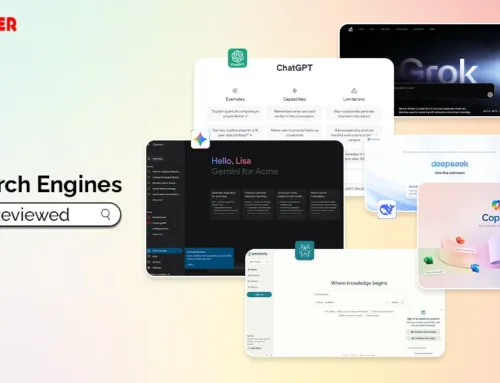Done with SEO activities for this month?
Confused about how to make SEO reports?
Don’t worry, we got you.
SEO reporting is an essential part that helps overview the efforts of any SEO campaign. Therefore, it is important to do this in the right manner.
In this blog, let’s uncover the best ways to do SEO reporting and the helpful tools to create one.
What is SEO Reporting?
SEO reporting is the process of tracking your website’s SEO performance by collecting and presenting real-time data through different tools. It helps interpret the KPIs for a particular SEO campaign.
An SEO report includes data on –
- Organic Traffic..
- Keyword Rankings.
- Content Performance.
- Backlinks.
- Overall Site Health.
- User Experience Metrics.
- Conversion Rates.
A good SEO report is –
- Easy and clear to understand.
- Provide a summary of the overall SEO strategy,
- Give a clear roadmap for the future.
Why is SEO Reporting Essential for Businesses?
Whether you’re a business owner or an SEO professional, clear and insightful reports can help you measure progress, refine strategies, and showcase results effectively.
Tracking Website Performance
A good SEO report helps you measure the success of your SEO efforts by giving you insights into KPIs like organic traffic, keyword rankings, and backlinks.
SEO reports can help you see what’s working for you or your client and what needs to be changed for better results.
Make Data-Driven Decisions
An SEO reporting process requires gathering several data analytics reports from various sources and tools such as Google Analytics, Google Console, page speed insights, etc. Analysis based on these data provides a roadmap for creating an SEO strategy.
Hence, instead of relying on guesswork or ‘feeling,’ you will get data-led results for your campaign, which will also help your future SEO strategy.
Get Help in Benchmarking
SEO reporting lets you compare your site’s performance against competitors and industry norms, helping you develop long-term growth strategies. Monitoring organic traffic and search engine rankings can uncover competitive strengths or areas that need improvement.
Easy Client Communication
Detailed reports showing key metrics like website traffic, keyword ranking, and conversion rates help clients see how their SEO efforts impact their online presence.
Interactive reports with visualizations such as charts and graphs help clients understand complex information at a glance, creating transparency and building trust in your partnership.
Good SEO reporting improves client satisfaction and strengthens your agency’s relationship with clients by enabling meaningful conversations based on data.
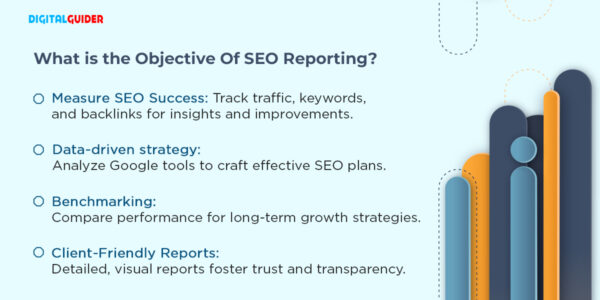
What KPIs Must be Included in SEO Reporting?
Several factors should be considered when selecting KPIs for SEO reporting to ensure they accurately represent SEO performance and align with overall business objectives.
Start by Identifying your overall business goals.
Are you looking to increase sales?
Increase brand awareness?
Improve website engagement?
Then, your SEO KPIs should be relevant to those goals.
Choose KPIs that directly affect your SEO success. For example, you could choose organic search traffic for the top of your funnel, keyword rankings for the middle, and conversion rates for the bottom.
Track your competitors’ SEO performance to see where you’re doing well and where you need to improve. Analyze metrics such as keyword ranking, backlink profile, organic visibility, etc., to better understand your competition.
SEO KPIs should be specific, measurable, achievable, relevant, and time-bound. Set clear KPIs to track progress and identify areas that need attention.
Add user experience and site performance metrics, such as page load time, mobile responsiveness, usability, etc. A good user experience improves SEO and leads to higher conversions and customer satisfaction.
How to Create an SEO Report for Your Client?
1. Understand Client Objectives
Before diving into the report, ensure you understand what your client wants to achieve with their website. Do they want more people to buy their products? Or maybe they want to get more people to sign up for their services? Knowing their goals will help you tailor the report to their needs.
Tip: Schedule a meeting with your client to discuss their objectives in detail. Take notes and ask questions to ensure you have a clear understanding of what they want to accomplish.
2. Gather Data for SEO Reporting
Collect information about how the website performs in search engines and social media. Look at things like how many people are visiting the site, which pages they’re looking at, and where they’re coming from.
Tip: Use tools like Google Analytics and Google Search Console to gather data about website traffic and performance. You can also use social media analytics tools to track engagement and audience demographics.
3. Define Key Metrics
Determine which numbers are most important to your client. Are they most interested in the number of people visiting their site? Or maybe they want to know the number of people buying their products?
Tip: Focus on key metrics directly related to your client’s goals. Too much data can be overwhelming, so keep it simple and stick to what matters most.
4. Customize Report Format
Present the data in a way that makes sense to your client. Some people prefer lots of charts and graphs, while others might like a more straightforward written report.
Tip: Ask your client how they prefer to receive information and tailor the report format to their preferences. If you’re unsure, it’s okay to ask for feedback along the way to ensure you’re on the right track.
5. Executive Summary
Start the report with a summary that highlights the most important findings. This will give your client a quick overview of what they need to know.
Tip: Keep the executive summary brief and to the point. Focus on the key takeaways and avoid getting bogged down in details.
6. Traffic Analysis
Look at the number of visitors to the website and where they’re coming from. This will help you understand which marketing efforts are working and which ones need improvement.
Tip: Compare traffic data over time to see if there are any trends or patterns. For example, are there certain times of the year when traffic tends to spike? This can help you plan future marketing campaigns more effectively.
7. Keyword Performance
Check how well the website ranks for important keywords related to your client’s business. This will give you insight into the site’s visibility in search engine results.
Tip: Look for opportunities to optimize content around high-performing keywords. This can help improve search engine rankings and drive more traffic to the website.
8. Content Performance
Evaluate how well the website’s content engages visitors. Look at metrics like bounce rate, time on the page, and social shares to gauge interest and effectiveness.
Tip: Identify top-performing content and see if any common themes or topics resonate with your audience. This can help inform future content creation efforts.
9. Backlink Profile
Examine the websites that are linking to your client’s site. High-quality backlinks can improve search engine rankings and drive more traffic to the site.
Tip: Watch for spammy or low-quality backlinks that could harm your client’s SEO efforts. Disavow these links if necessary to protect their website’s reputation.
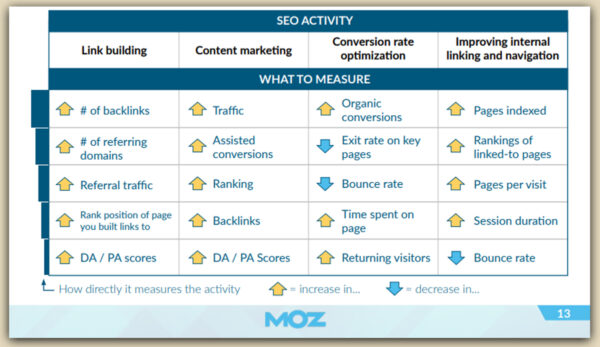
10. Technical SEO Audit
Look inside the website to ensure everything is running smoothly. Check for issues like broken links, slow page speed, and mobile friendliness.
Tip: Use tools like Screaming Frog or SEMrush to conduct a thorough technical SEO audit. Address any issues you find to ensure the website is optimized for search engines and user experience.
11. Competitor Analysis
Compare your client’s website to the competition. Look at things like search engine rankings, website traffic, and social media presence to identify areas for improvement.
Tip: Use competitive analysis tools like Ahrefs or SpyFu to gather data about your client’s competitors. Look for opportunities to outperform the competition and differentiate your client’s website in the marketplace.
12. Recommendations
Based on your analysis, provide actionable recommendations for improving SEO performance. This might include things like optimizing website content, building more high-quality backlinks, or fixing technical issues.
Tip: Prioritize your recommendations based on their potential impact and feasibility. Focus on quick wins that can deliver results in the short-term and longer-term strategies for sustained growth.
5 Free SEO Reporting Tools
Let’s learn some free SEO reporting tools to help you create quick, presentable SEO reports.
Google Search Console
Google Search Console is a free tool provided by Google to track, manage, and resolve any website’s visibility in Google search results. It’s vital for representing data and highlighting areas for improvement.
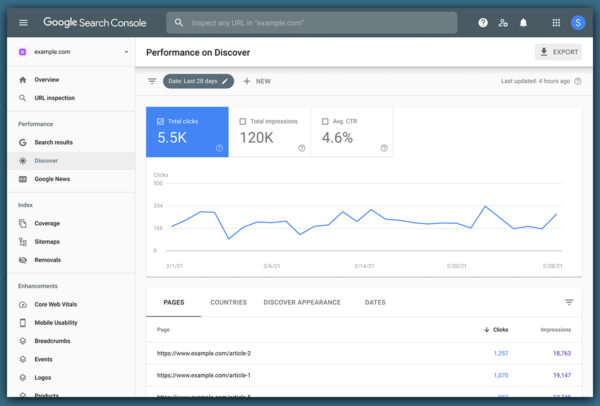
Here are some ways you can use Google Search Console for effective SEO reporting-
- Monitor website performance directly from Google’s perspective.
- Track clicks, impressions, click-through rates, and keyword positions.
- Identify technical issues affecting search visibility and improve site optimization.
- Submit sitemaps and request URL indexing for enhanced site visibility.
Google Analytics
GA4 (Google Analytics) is a web analytics platform that helps you track website performance, user engagement, traffic, and more.
GA4 collects and analyzes user engagement data in more than 20 reports.
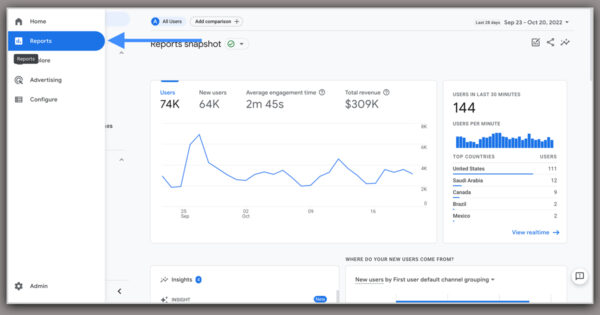
You can collect traffic acquisition reports, particular landing page reports, search console query reports, 404 error reports, and more.
Some uses of Google Analytics include-
- Comprehensive data on website traffic, user behavior, and conversions.
- Provides insights into organic search traffic, referral sources, and user engagement.
- Advanced segmentation and goal-tracking options for measuring SEO impact.
- Seamless integration with other Google tools for a holistic view of online performance.
Google Looker Studio
Google Looker Studio, formerly Google Data Studio, is a must-have SEO reporting tool. It is a free tool to convert your data into a presentable visual format.
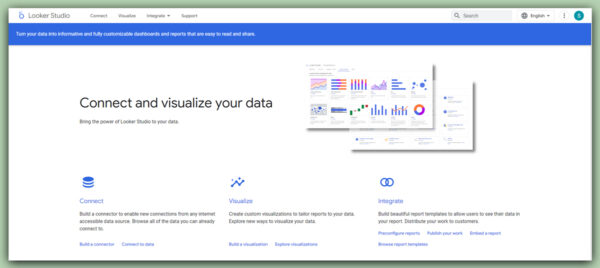
You can –
- Customize reports and dashboards.
- Present SEO metrics with a wide range of visualization options.
- Create efficient reports with real-time data updates and collaborative features.
- Turns data into informative, easy-to-read for client presentations or internal reporting needs.
Screaming Frog
The Screaming Frog is an all-in-one site crawler that efficiently crawls large and small websites and allows you to analyze the results in real time. It collects important on-site information to help you make better decisions.
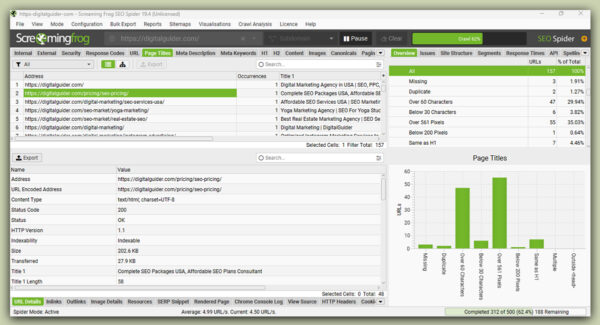
With screaming frog, you can –
- Analyze page titles and meta descriptions during a crawl.
- Discover exact duplicate URLs with an md5 algorithmic check.
- Quickly create XML Sitemaps and Image XML Sitemaps
- Analyze internal links and URL structure with interactive crawl & directory force-oriented diagrams.
Google Slides
Google Slides is presentation software with Google’s free web-based document management system. It is a great and easy way to present your SEO reports in an engaging, professional, and presentable manner.
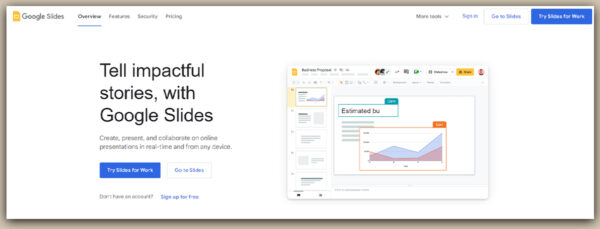
Google Slides is a user-friendly platform on which you can easily collaborate with your other team members for seamless feedback and revisions. Choose customizable templates and themes to align your SEO reports with your client’s branding.
Google Slides is the best alternative for distributing reports to stakeholders to inform them about SEO performance.
Maximize Impact with SEO Reporting
Wrapping up your routine SEO activities is just the beginning—showing your clients the results of those efforts is where it all comes together. A well-crafted SEO report doesn’t just sum up your work; it highlights the wins, uncovers opportunities, and helps build trust with your clients.
Using the tips and tools shared in this guide, you can create reports that make sense to your clients and show them the real value of your SEO efforts. From tracking keywords to analyzing traffic and comparing competitors, a clear and visually appealing report will make it easy for your clients to see the impact.
If you need help creating these reports or want to boost your website’s SEO performance, we’re here for you. Contact us today to see how our SEO services can help your business grow. Let’s work together to take your online presence to the next level!
FAQs – SEO Reporting
Q1. How often should I generate an SEO report?
A1. The frequency of SEO reporting depends on your goals. For ongoing tracking, a monthly report is perfect, while weekly reports help monitor recent changes. Quarterly reports provide a broader performance overview.
Q2. What are the key metrics to track in an SEO report?
A2. Organic traffic (Google Analytics), Keyword rankings (Ahrefs, SEMrush), Backlinks & domain authority, Click-through rate (CTR), Conversion rate & goal completions
Q3. What’s the difference between an SEO audit and an SEO report?
A3. An SEO audit is a one-time, in-depth analysis of a website’s SEO health, identifying technical issues and opportunities. An SEO report is a recurring summary of ongoing SEO performance and progress.
Q4. How can I automate SEO reporting to save time?
A4. You can use tools like Google Data Studio, SEMrush, Ahrefs, and Moz to generate automated SEO reports. These tools pull real-time data and present it in a visually appealing format.
Q5. Which tools are best for SEO reporting?
A5. Google Analytics (traffic & conversions), Google Search Console (search visibility), SEMrush & Ahrefs (keyword rankings & backlinks), Moz & Screaming Frog (technical SEO insights)
Q6. How do I track keyword rankings in an SEO report?
A6. You can track keyword rankings using Google Search Console, SEMrush, or Ahrefs. These tools show position changes, search volume, and ranking trends for your target keywords.
Q7. What is organic traffic, and how can I measure its growth?
A7. Organic traffic refers to visitors coming from unpaid search results. You can track its growth using Google Analytics by checking the “Acquisition > Overview > Organic Search” section.
Q8. How do I analyze backlinks in my SEO report?
A8. Use tools like Ahrefs, Moz, or SEMrush to Check new & lost backlinks, Evaluate domain authority, and Identify toxic links that may harm rankings.
Q9. What role does technical SEO play in SEO reporting?
A9. Technical SEO ensures that search engines can crawl and index your website properly. Your SEO report should check for: Page speed, Mobile-friendliness, Broken links & 404 errors, XML sitemap & robots.txt issues, SEO Performance & Strategy
Q10. How can I show ROI (Return on Investment) in an SEO report?
A10. To measure SEO ROI, track Revenue from organic traffic (E-commerce tracking in GA), Lead generation & form submissions, and Cost-per-acquisition (CPA) vs. SEO investment.
Q11. What are the common mistakes in SEO reporting?
A11. Tracking vanity metrics instead of conversions, Ignoring user intent in keyword rankings, Not segmenting data for better insights, and Failing to set clear SEO goals.
Q12. How do I create an SEO report for clients or stakeholders?
A12. A client-friendly SEO report should Focus on business impact (not just rankings), Include visual data (charts & graphs), Provide actionable insights and next steps,
Q13. What’s the best way to present SEO data in a report?
A13. Use Google Data Studio for interactive dashboards or create PDF reports with clear sections: Summary (key takeaways), Traffic & rankings overview, Backlink analysis, Actionable recommendations
Q14. How do I improve my SEO strategy based on report insights?
A14. If organic traffic is low, optimize content & keywords, If CTR is low, improve meta titles & descriptions, If backlinks are poor, focus on link-building strategies, If conversions are low, enhance on-page SEO & user experience.

